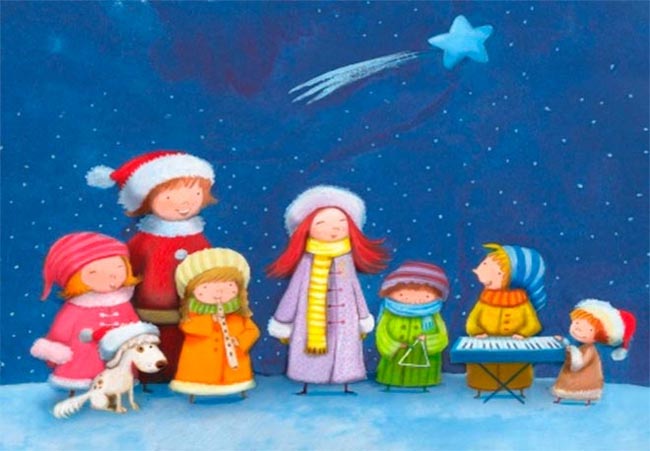Christmas Carols
When it comes to stirring up the Christmas spirit of joy, it is hard to beat carols such as Silver Bells, The Twelve Days of Christmas, Happy Holidays, Feliz Navidad, and, of course, Jingle Bells. Carols fascinate everybody, some bring back happy memories, some have a twinge of sadness. Not all carols are about religion. Some of them are about the cold weather and others about the celebrations. But how exactly did this tradition begin? Who wrote the carols? And how come do we sing them only during Christmas?
In their earliest beginnings, carols really had nothing to do with Christmas – or even with Christianity, for that matter. The melodies were originally written to accompany an ancient dance form called the circle dance which was associated with fertility rites and pagan festivities in the medieval Celtic countries of Europe. As the Christian Church established itself in these areas, the familiar melodies and rhythms of carols found their way into Christian meetings and celebrations. But because the songs had such pagan roots, the Church was very uneasy about them for a long time. In fact, a Church Council in the mid-Seventh Century explicitly forbade Christians to sing carols.
As the austerity of medieval Christianity began to soften, a kind of renaissance took place and carols merged with folk songs that were the Pop songs of the day – the songs that were whistled or sung by ordinary people. History credits Saint Francis of Assisi with bringing about a new interest in the feast of the Nativity in Bethlehem. The priests in St. Francis' order developed a style of religious folk song called a lauda. Laudas had happy, joyful dance rhythms that were so catchy and memorable that the song form soon spread across 14th Century Europe. The religious lauda got mixed together with a popular pagan custom called wassailing, in which people sang from door to door to drive away evil spirits and drank to the health of those they visited. What evolved from the marriage of wassailing and the lauda was the custom of carolling, which is still so much a part of our Christmases some seven centuries later.
By the 7th Century it was clear that everyone was having entirely too much fun and so the English Parliament – decided to abolish Christmas altogether. People who continued to celebrate the birth of Christ with happy and light hearted carol singing were actually accused of witchcraft and risked imprisonment or death. It took several dark and gloomy decades before the prohibition against carol singing was lifted and people again began to write and sing carols freely. The popularity of the carol increased rapidly throughout the 18th and 19th Centuries, and it was during this time period that many of our favorite carols were created.
Traditionally, carols have often been based on medieval chord patterns, and it is this that gives them their uniquely characteristic musical sound. Some carols like Personent hodie, Good King Wenceslas, and The Holly and the Ivy can be traced directly back to the Middle Ages, and are among the oldest musical compositions still regularly sung.
Before carol singing in public became popular, there were sometimes official carol singers called 'Waits'. Waits were originally watchmen who patrolled the streets and byways of the old walled cities keeping guard against fire and singing out the hours of the night. During the holiday season, they would include some carols for the people along the way. Eventually the term was used to describe groups of musicians who sang and played for various civic events during the Christmas season. Also, at this time, many orchestras and choirs were being set up in the cities of England and people wanted Christmas songs to sing, so carols once again became popular. Many new carols, such as Good King Wenceslas, were also written in the Victorian period.
Christmas Carols Trivia
The biggest selling Christmas Carol
White Christmas by Irving Berlin is the biggest-selling Christmas song of all time. It is estimated to have sold approximately 350 million copies on record and sheet music.
The Story of the Silent Night Carol
The carol Silent Night was written in 1818, by an Austrian priest Joseph Mohr. He was told the day before Christmas that the church organ was broken and would not be prepared in time for Christmas Eve. He was saddened by this and could not think of Christmas without music, so he wanted to write a carol that could be sung by choir to guitar music. He sat down and wrote three stanzas. Later that night the people in the little Austrian Church sang Stille Nacht; for the first time. The first instrument on which the carol Silent Night was played was a guitar.
What is Carols Singing?
It is one of the oldest customs, going back to the Middle Ages when beggars, seeking food, money, or drink, would wander the streets singing holiday songs.
Old or new?
Although some of the carols sung date from as far back as the medieval times, the majority of the ones that people sing in present times were written in the 1800s or 1900.



